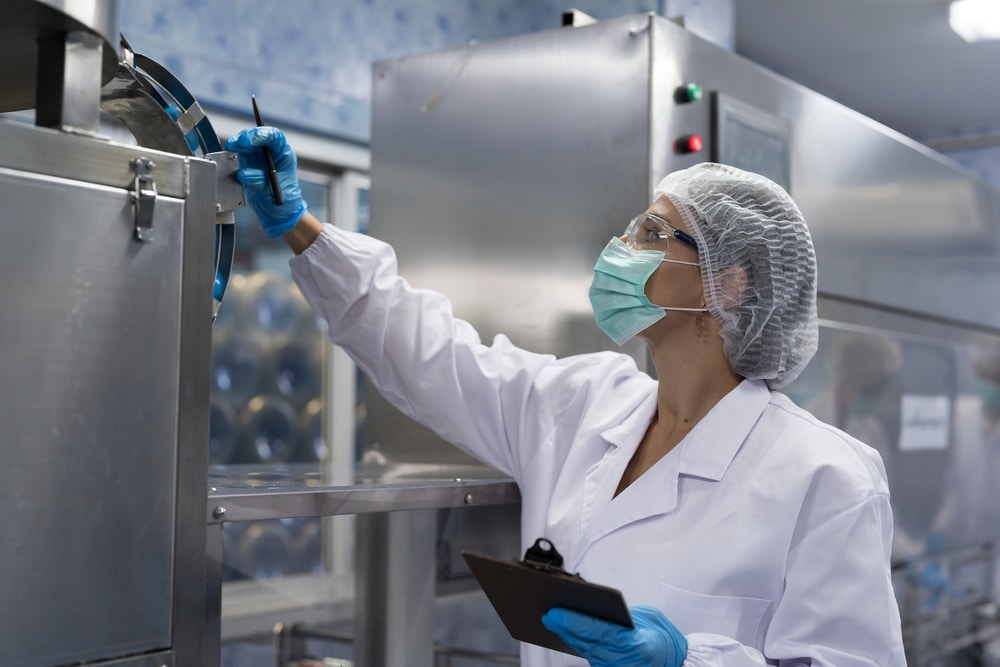Need to understand good manufacturing practices (GMP) for your manufacturing processes? This guide to good manufacturing practices (GMP) for manufacturers breaks down the essential principles, regulations, and actionable steps to implement GMP effectively. From maintaining cleanliness to ensuring product safety, learn how to meet the highest quality standards in your industry.
Key Takeaways
- GMP standards are essential for maintaining product quality and safety across various industries, helping to safeguard consumer health.
- Key principles of GMP include cleanliness, regular process monitoring, and strict documentation practices to ensure compliance and reduce contamination risks.
- Implementing GMP involves developing standard operating procedures (SOPs), conducting regular audits, and fostering a culture of continuous improvement to adapt to evolving standards.
Understanding GMP Standards
Good Manufacturing Practices (GMP) serve as a foundation for quality assurance in manufacturing. They are essential for maintaining high standards in production processes. These practices consistently produce and control products to meet established quality standards, safeguarding consumer health and industry integrity. Consider the peace of mind that comes from knowing each product meets the highest standards of safety and efficacy.
Current Good Manufacturing Practices (cGMP) represent the most up-to-date set of regulations that manufacturers must follow to ensure product quality and safety. These standards evolve with scientific advancements and technological innovations, requiring manufacturers to continually improve their processes to protect consumers. cGMP emphasizes proactive quality assurance measures, rigorous testing, and thorough documentation, providing an elevated level of oversight for industries such as pharmaceuticals and food production.
GMP and cGMP standards are not optional; they are enforced by national governments to ensure the safe and effective production of goods. This regulatory framework requires manufacturers to adhere to stringent guidelines, covering everything from the cleanliness of facilities to the training of personnel. GMP acts as a protective barrier, preventing substandard products from reaching consumers and ensuring rigorous safety and quality benchmarks are met.
The scope of GMP is vast, applying to various industries including pharmaceuticals, food and beverage, cosmetics, and medical devices. Regardless of the industry, the fundamental principles of GMP remain the same: to protect the consumer by ensuring that products are safe, pure, and effective. This consistency across industries underscores the universal importance of GMP in maintaining public health and trust.
As we move forward, we’ll explore the key principles that underpin GMP, providing a deeper insight into the practices that ensure products are consistently produced to the highest quality standards.
Key Principles of Good Manufacturing Practices
The principles of Good Manufacturing Practices (GMP) form the bedrock of quality manufacturing. These principles provide a structured framework to ensure that products are consistently produced and controlled according to predetermined quality standards. Consider a manufacturing site where every process is meticulously planned, monitored, and validated to guarantee product safety and efficacy.
One of the basic concepts of GMP is maintaining clean and well-organized facilities. This is crucial to prevent contamination and ensure product safety. The importance of cleanliness extends to all aspects of the manufacturing process, from the equipment used to the personal hygiene of the staff. Maintaining high cleanliness standards prevents cross-contamination and safeguards product quality.
Regular monitoring and validation of processes ensure compliance with GMP standards. This involves checks and assessments to confirm that all production processes function correctly and produce the desired quality. Quality control is a continuous process that ensures every product meets specified standards before reaching the consumer.
Another key principle is the lifecycle management of analytical methods, which includes stages like method design, qualification, and performance verification. Managing these methods throughout their lifecycle ensures that analytical processes remain effective and reliable. This level of attention to detail is what separates good manufacturing practice from subpar practices.
These principles are not just theoretical guidelines; they are practical steps that can be implemented to enhance product quality and safety. Adhering to these principles ensures products are consistently produced to the highest standards, meeting regulatory requirements and consumer expectations.
Next, we’ll dive into the practical aspects of implementing GMP regulations, turning these principles into actionable steps that can be applied in any manufacturing environment.
Implementing GMP Regulations
Implementing GMP regulations involves translating these high-level principles into concrete actions and procedures within the manufacturing process. Developing standard operating procedures (SOPs) is crucial for consistent production and quality control, providing clear instructions for each stage of the manufacturing process.
A well-structured SOP includes elements such as:
- Title
- Purpose
- Scope
- Definitions
- Responsibilities
- Detailed procedures
This comprehensive approach ensures that all critical processes are accurately captured and that best practices are implemented. Involving subject matter experts in developing SOPs enhances their effectiveness, ensuring every manufacturing aspect is covered.
Clear procedures maintain product consistency and quality, reducing the risk of deviations. Detailed instructions for each production stage ensure every product meets high standards. This level of detail also helps in preparing for inspections, as it demonstrates a commitment to quality and compliance.
Utilizing a centralized document management system can facilitate easy access to the latest SOPs, ensuring that all staff have the necessary information at hand. This system maintains up-to-date records, essential for demonstrating compliance during inspections. Regular audits and training sessions can further reinforce these practices, ensuring that all personnel are aware of their roles and responsibilities in maintaining GMP standards.
Implementing GMP is not just about compliance; it also leads to reduced waste and prevents costly product recalls, thereby protecting both consumers and manufacturers. Focusing on quality from the start helps companies avoid non-compliance pitfalls and build a reputation for reliability and excellence.
Next, we will delve into the critical role of quality control in GMP, exploring how it ensures that every product meets the highest standards of quality and safety.
Quality Control in GMP

Quality Control (QC) is the backbone of GMP, responsible for verifying that products meet established quality standards through rigorous testing and inspection. Consider a manufacturing process where every product undergoes thorough checks to meet desired specifications before reaching the consumer. This is the essence of QC in good manufacturing practices.
Quality control measures and thorough documentation are critical for achieving and verifying GMP compliance. Maintaining accurate documentation ensures traceability of all manufacturing processes and quality control activities, providing a clear audit trail for inspections. This documentation serves as proof that the manufacturing process adheres to GMP regulations, reinforcing the commitment to quality and safety.
An analytical target profile is essential for defining the goals and acceptance criteria of method development, ensuring control over product quality. Analytical method validation in GMP must demonstrate that the method is fit for its intended use, which may involve multiple rounds of validation during product development. Thorough validation ensures that methods used in quality control are reliable and effective.
Analytical transfer is crucial for confirming a method’s validation status across different laboratories, especially in a globalized biomanufacturing environment. Covalidation allows simultaneous validation and transfer of analytical methods between sites, ensuring that all participating labs meet the same standards. This collaborative approach enhances the consistency and reliability of quality control practices.
Incoming raw materials also undergo rigorous quality checks to identify contaminants and ensure product safety. Physical, chemical, and microbiological contaminations pose significant risks and require regular inspection and testing protocols. Implementing these measures prevents contamination and maintains high product quality standards.
Quality control is not a static process; it involves continuous performance reviews and updates to uncover opportunities for further enhancements in GMP compliance. This proactive approach ensures quality control measures evolve with changing standards and challenges, maintaining manufacturing integrity.
Next, we’ll explore the role of quality assurance in GMP, focusing on how it complements quality control to ensure comprehensive product safety and compliance.
Ensuring Quality Assurance
Quality assurance (QA) is the proactive component of GMP, focusing on preventing quality defects and ensuring compliance with established standards. Consider a manufacturing environment where every step is meticulously planned and monitored to prevent issues before they arise. This is the role of QA in good manufacturing practices.
Pharmaceutical companies must comply with GMP to obtain and maintain marketing authorization. Adhering to GMP standards enhances a company’s reputation and minimizes negative consumer feedback. Focusing on quality assurance helps manufacturers build trust with consumers and regulatory bodies, ensuring long-term product success.
Quality management is a core element of GMP, focusing on assessing and enhancing manufacturing procedures to mitigate risks. A robust quality management system includes standard operating procedures (SOPs), document control, and personnel training to maintain quality. These elements form a comprehensive framework for ensuring product quality and safety.
GMP serves as the foundational framework for quality assurance, covering aspects like facility design and equipment validation. After product approval, ongoing performance monitoring and periodic revalidation of analytical methods are necessary to maintain compliance with regulatory standards. This continuous monitoring ensures that any changes in the manufacturing process do not compromise product quality.
Implementing a culture of continuous improvement requires consistent reviews and updates to the quality management system to adapt to new challenges and standards. Fostering a culture of quality ensures processes remain effective and compliant with GMP requirements.
Next, we will discuss the management of raw and packaging materials, highlighting the importance of proper handling and storage to maintain product quality.
Raw Materials and Packaging Materials Management
Effective management of raw materials and packaging materials is crucial in maintaining the safety and quality of products. Consider a manufacturing site where every raw material is meticulously tracked and stored to prevent contamination. This level of attention to detail is essential in good manufacturing practices.
Maintaining good hygiene and sanitation practices in manufacturing facilities is essential to minimize contamination risks. Temperature management is critical, as improper storage temperatures can lead to microbial growth and spoilage of raw materials. Controlling the storage environment ensures raw materials remain safe and effective for use.
Proper segregation of different raw materials is vital to prevent cross-contamination during the production process. Clear labeling and identification help track inspection status and avoid using contaminated products. These practices ensure that only high-quality materials are used in the manufacturing process, maintaining the integrity of the finished product.
Advancements in technology, such as x-ray inspection systems, enhance the efficiency of detecting and managing raw material contamination. Leveraging these technologies improves manufacturers’ ability to identify and address potential issues before they impact product quality.
Effective management of raw materials and packaging materials is not just about compliance; it also contributes to the overall efficiency and reliability of the manufacturing process. Implementing these practices ensures products are consistently produced to the highest standards.
Next, we’ll explore the importance of personal hygiene and training in maintaining GMP standards, focusing on how these practices prevent contamination and ensure product safety.

Personal Hygiene and Training
Personal hygiene and training are critical components of GMP, especially in the food and beverage industry where hands are a primary source of cross-contamination. Imagine a production line where every employee follows strict hygiene protocols, significantly reducing the risk of contamination. This level of diligence is necessary to maintain product safety and quality.
Effective personal hygiene practices help minimize the risk of cross-contamination during food production. A comprehensive hand hygiene strategy is essential for maintaining product safety and adhering to GMP standards. This includes regular hand washing, use of sanitizers, and wearing appropriate protective gear.
Training in good manufacturing practices emphasizes the importance of hand hygiene to mitigate contamination risks within processing environments. Regular training sessions for employees on GMP regulations and SOPs are crucial for maintaining compliance and ensuring ongoing quality in production. These sessions ensure that all personnel understand their roles and responsibilities in maintaining hygiene and compliance with GMP standards.
It is crucial for all employees to understand and adhere to the defined procedures to minimize errors and ensure consistency in operations. Fostering a culture of hygiene and continuous learning significantly reduces contamination risk and enhances product safety.
Next, we will delve into the maintenance of equipment and facilities, highlighting the importance of cleanliness and proper record-keeping in preventing contamination and ensuring compliance.
Equipment and Facilities Maintenance
Maintaining equipment and facilities is a fundamental aspect of GMP, ensuring that the manufacturing environment remains clean and efficient. Consider a facility designed for easy cleaning and maintenance, where every piece of equipment is meticulously cared for. This is the ideal scenario in good manufacturing practices.
Facilities must be designed to facilitate easy cleaning, maintenance, and efficient operations according to federal regulations. General cleanliness and proper storage of equipment are essential to maintain compliance and prevent contamination risks. Maintaining high cleanliness standards prevents cross-contamination and ensures product safety.
Records of cleaning, maintenance, and equipment use must be meticulously maintained to avoid cross-contamination in manufacturing. These records provide a clear audit trail, demonstrating GMP compliance and ensuring prompt issue resolution. Regular inspections and maintenance checks can further enhance the reliability and efficiency of the manufacturing process.
Proper maintenance of equipment and facilities contributes to overall manufacturing efficiency and reliability. Implementing these practices ensures products are consistently produced to the highest standards.
Next, we will explore the importance of risk assessment and management in GMP, focusing on how these practices help mitigate potential hazards and ensure product safety.
Risk Assessment and Management
Risk assessment and management are integral to GMP, helping to identify and mitigate potential hazards that could impact product safety. Consider a manufacturing process where every potential risk is systematically identified, evaluated, and addressed. This proactive approach is essential in maintaining high standards of quality and safety.
GMP standards help mitigate risks such as cross-contamination and mislabeling, which can adversely affect product safety. Risk assessment involves pinpointing potential issues such as equipment failures and supply chain disruptions. Techniques like Failure Mode and Effects Analysis (FMEA) help prioritize risks based on their potential failure impact. Systematically evaluating these risks allows manufacturers to allocate resources effectively to mitigate them.
A risk assessment framework enables the systematic identification and evaluation of risks. Utilizing a risk assessment matrix assists manufacturers in quantifying risks based on their probability and impact. Quantifying risks aids in understanding their significance and potential consequences, prioritizing them for resource allocation.
Continuous risk monitoring ensures that changes in risk profiles are detected and addressed timely. Employing control measures like safety protocols and redundancy systems is essential for reducing identified risks. By having a system in place to manage deviations and non-conformances, manufacturers can quickly identify and address issues that may arise during production.
Effective risk management involves preventing problems and being prepared to respond quickly and effectively when issues arise. This proactive approach ensures that products remain safe and compliant throughout their lifecycle.
Next, we will delve into the inspection and compliance process, highlighting the importance of regular audits and adherence to GMP standards.

Inspection and Compliance
Inspection and compliance are critical components of GMP, ensuring that manufacturing processes adhere to established quality standards. Consider a manufacturing facility always prepared for unannounced inspections, with every process meticulously documented and compliant with regulations. This level of preparedness is essential for maintaining product quality and safety.
The FDA conducts four types of inspections: Pre-Approval Inspections, Surveillance inspections, Follow-up compliance inspections, and ‘For Cause’ Inspections. Surveillance inspections, which occur every 2-3 years, are now performed on an unannounced basis, emphasizing the need for companies to continuously maintain compliance. This highlights the importance of regular audits and monitoring to ensure ongoing compliance with quality assurance and GMP standards.
Mutual Recognition Agreements (MRAs) exist between the FDA and various regulatory bodies, allowing for the acceptance of inspections conducted by these agencies. This collaboration helps streamline the inspection process and ensures that manufacturers comply with international standards. Failure to comply with FDA standards can lead to severe consequences, including Warning Letters, product recalls, and legal action.
Proper maintenance of equipment and facilities is crucial to avoid citations during regulatory inspections. Maintaining high standards of cleanliness and organization demonstrates a commitment to quality and compliance. Regular inspections and compliance checks help identify any potential issues before they become significant problems.
Inspection and compliance are not just about meeting regulatory requirements; they are about maintaining the highest standards of quality and safety. Adhering to GMP regulations ensures products are safe, effective, and reliable.
Next, we will discuss the importance of documentation and record-keeping in GMP, focusing on how these practices ensure traceability and accountability.
Documentation and Record-Keeping
Effective documentation and record-keeping are vital to GMP compliance, providing traceability and accountability for all manufacturing processes. Consider a system where every step of the manufacturing process is documented, creating a clear audit trail demonstrating GMP compliance. This level of detail is essential for maintaining quality and safety.
Documentation acts as an audit trail, providing clear evidence of compliance with GMP standards during inspections. All GMP-related documents must be prepared, reviewed, approved, and maintained according to strict procedures to guarantee their accuracy and relevance. This rigorous approach ensures all documentation is up-to-date and reflects current manufacturing practices.
Periodic reviews and updates of documentation keep pace with changes in procedures and regulations. The implementation of a structured document hierarchy helps ensure compliance with GMP by organizing procedures from broad policies to specific operating instructions. This structured approach makes it easier to manage and retrieve documents, ensuring that all personnel have access to the latest information.
Effective documentation and record-keeping are not just about compliance; they also contribute to the overall efficiency and reliability of the manufacturing process. Maintaining accurate and detailed records ensures products are consistently produced to the highest standards.
Next, we will explore the principle of continuous improvement in GMP, focusing on how manufacturers can enhance their processes and maintain high standards of quality.

Continuous Improvement in GMP
Continuous improvement is a core principle in GMP, focusing on enhancing both quality and operational efficiency through systematic evaluations. Consider a manufacturing process that is constantly evolving, incorporating new technologies and methodologies to improve quality and efficiency. This proactive approach is essential for maintaining high standards in a dynamic industry.
Monitoring and analyzing GMP SOP implementation through audits can help identify gaps in compliance and inform continuous improvement strategies. Regularly reviewing and updating processes ensures compliance with the latest regulations and standards. This continuous monitoring also helps identify opportunities for improvement, allowing manufacturers to enhance their processes and maintain high standards of quality.
Incorporating innovative technologies and methodologies can significantly boost the efficiency and quality of GMP processes. Embracing new technologies improves manufacturers’ ability to detect and address potential issues, ensuring products are consistently produced to the highest standards. This focus on continuous improvement helps manufacturers stay ahead of the competition and maintain their reputation for quality and reliability.
ASC Software: Streamlining GMP Compliance with Cutting-Edge Solutions
At ASC Software, we understand the complexities of Good Manufacturing Practices and the challenges manufacturers face in maintaining compliance. Our robust solutions are designed to simplify GMP implementation, ensuring your business adheres to regulatory standards while improving operational efficiency.
With our advanced Warehouse Management System (WMS), you can automate the tracking and management of raw materials, finished goods, and processes, ensuring full traceability and real-time visibility. Our software also supports the creation and management of detailed SOPs, helping your team adhere to consistent, quality-driven processes.
Additionally, ASC Software’s integrated quality control features streamline inspections and audits, reducing the risk of non-compliance and safeguarding your product’s quality from production to distribution. By fostering a culture of continuous improvement with our analytics and reporting tools, your business will be well-positioned to adapt to evolving GMP regulations and market demands.
Let ASC Software be your trusted partner in GMP compliance, empowering you to focus on quality, safety, and growth.
Summary
Good Manufacturing Practices (GMP) are essential for ensuring that products are consistently produced and controlled according to high standards of quality and safety. From understanding GMP standards to implementing regulations, maintaining quality control, and ensuring quality assurance, every aspect of GMP plays a critical role in safeguarding consumer health and maintaining industry integrity.
Effective management of raw materials and packaging materials, personal hygiene and training, equipment and facilities maintenance, risk assessment and management, and inspection and compliance are all crucial components of GMP. By adhering to these practices, manufacturers can ensure that their products are safe, effective, and reliable, building trust with consumers and regulatory bodies.
Continuous improvement is a core principle of GMP, focusing on enhancing both quality and operational efficiency through systematic evaluations and the incorporation of new technologies. By fostering a culture of quality and continuous improvement, manufacturers can stay ahead of the competition and maintain their reputation for excellence.
In conclusion, GMP is not just about compliance; it is about ensuring the highest standards of quality and safety in manufacturing. By embracing GMP, manufacturers can protect consumers, enhance their reputation, and achieve long-term success in the industry.
Ready to simplify GMP compliance? Contact ASC Software today to learn how our solutions can streamline your processes and ensure quality every step of the way!
Frequently Asked Questions
What are Good Manufacturing Practices (GMP)?
Good Manufacturing Practices (GMP) are essential guidelines that ensure products are made safely and consistently up to quality standards, protecting your health and ensuring trust in the industry. It’s all about keeping products reliable and safe for consumers like you!
Why is quality control important in GMP?
Quality control is vital in GMP because it ensures products are safe and effective by verifying they meet strict quality standards through thorough testing and inspection. This process protects consumers and maintains trust in the products.
How do manufacturers implement GMP regulations?
Manufacturers ensure GMP regulations are followed by creating standard operating procedures (SOPs), involving experts, and establishing clear processes. This structured approach not only streamlines compliance but also prepares them for inspections effectively.
What role does documentation play in GMP?
Documentation is essential in GMP as it ensures traceability and accountability for manufacturing processes, serving as proof of compliance during inspections. Without proper records, maintaining quality and meeting regulations becomes challenging.
How can manufacturers ensure continuous improvement in GMP?
To ensure continuous improvement in GMP, manufacturers should focus on regularly auditing SOPs, adopting innovative technologies, and consistently reviewing processes for compliance with current regulations. This proactive approach will help them stay ahead and enhance their operations.
What is the difference between Quality Control (QC) and Quality Assurance (QA)?
Quality Control (QC) checks the final product to ensure it meets quality standards through testing. Quality Assurance (QA) focuses on preventing defects by managing and improving the processes that create the product. QC is reactive, while QA is proactive.




